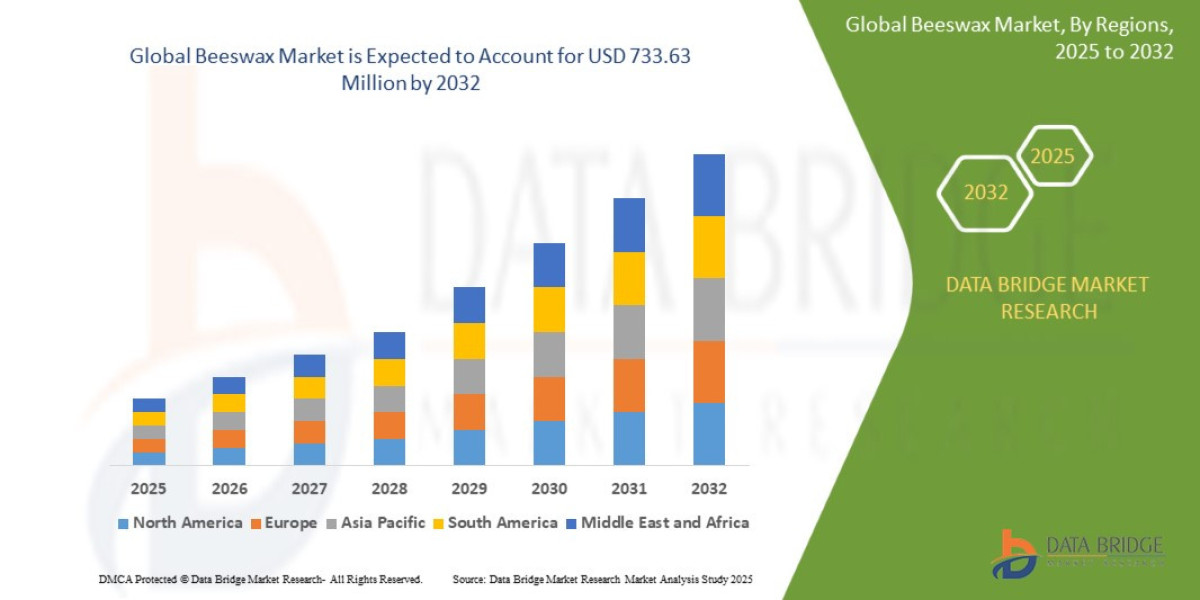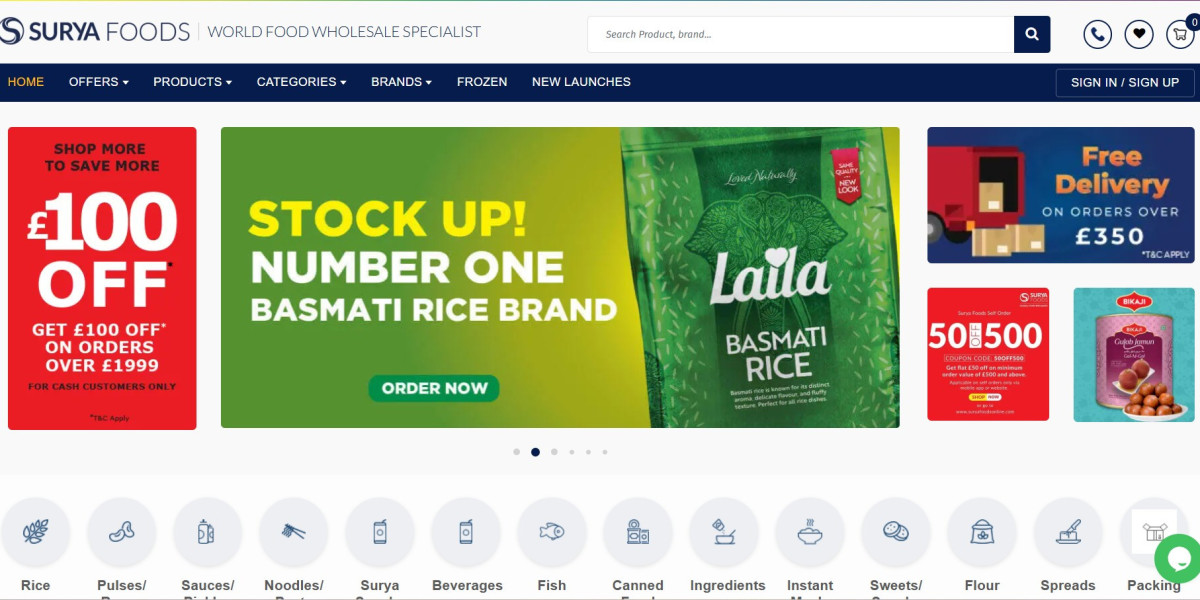The global market for beeswax (cera alba and cera flava) is experiencing a renaissance, driven by a powerful confluence of consumer preference for natural ingredients, stringent regulatory frameworks favoring clean-label formulations, and advancements in purification technologies. Far from being a niche commodity, beeswax is now viewed as a high-performance, multifunctional excipient and emollient, critical to the sustained growth of the cosmetics, pharmaceutical, and specialty food sectors. This article provides a detailed analysis of the market’s trajectory, key competitive dynamics, strategic opportunities, and inherent supply chain vulnerabilities.
Executive Summary
- The global beeswax market was valued at USD 579.14 million in 2024 and is expected to reach USD 733.63 million by 2032
- During the forecast period of 2025 to 2032 the market is likely to grow at a CAGR of 3.00%,
Market Overview
Beeswax is a natural wax secreted by worker honeybees (Apis mellifera) to build honeycombs. It is chemically complex, comprising esters of fatty acids and various long-chain alcohols. In the commercial market, beeswax is primarily differentiated by its processing:
Yellow Beeswax (Cera Flava): The unprocessed, natural wax retaining its characteristic yellow color and honey aroma. It holds the largest market share by volume.
White Beeswax (Cera Alba): Yellow beeswax that has been purified and bleached (typically using natural sunlight or chemical oxidants) to meet the stringent color and odor requirements of high-end cosmetics and pharmaceutical formulations.
Absolute Beeswax: A highly processed, solvent-extracted form used in fine fragrances and flavors.
Key Market Segments and Drivers
Application Segment | Market Share (Approx.) | Primary Drivers |
|---|---|---|
Cosmetics & Personal Care | 40% - 60% | Clean beauty trend, demand for natural moisturizers, lip balm, and clean-label makeup. |
Pharmaceuticals | 15% - 20% | Use as a natural excipient, drug delivery matrix, coating agent for tablets, and base for medicinal ointments (salves). |
Food & Confectionery | 10% - 15% | Natural glazing agent for fruits and candies, food packaging wraps (sustainable alternative to plastic). |
Industrial & Other | Remaining | Candle manufacturing (clean-burning), polishes, lubricants, and metal casting. |
The overwhelming driver is the macro shift toward sustainability and transparency. Consumers are actively seeking products free from synthetic chemicals, mineral oils, and petrolatum, positioning beeswax—a renewable, natural, and biodegradable resource—as a preferred alternative.
Market Size & Forecast
- The global beeswax market was valued at USD 579.14 million in 2024 and is expected to reach USD 733.63 million by 2032
- During the forecast period of 2025 to 2032 the market is likely to grow at a CAGR of 3.00%,
For More Information Visit https://www.databridgemarketresearch.com/reports/global-beeswax-market
Key Trends & Innovations
The beeswax market is not static; innovation is centered on enhancing purity, proving authenticity, and developing sophisticated delivery forms.
1. The Clean Beauty and Purity Mandate
The primary trend is the escalating requirement for residue-free beeswax. The wax can absorb contaminants, including pesticides (such as neonicotinoids) and heavy metals, from the hive environment. This necessitates advanced refining techniques. Leading manufacturers are investing heavily in technologies like membrane filtration and advanced deodorization/decolorization processes to produce ultra-pure, certified organic Cera Alba, which meets European Pharmacopoeia and USP standards. This high-purity product is essential for sensitive applications like lip care and ophthalmic pharmaceuticals.
2. Traceability and Ethical Sourcing
As consumers demand transparency, the concept of "hive-to-shelf" traceability is becoming a competitive necessity. Utilizing blockchain technology and robust supply chain audits, companies are tracking beeswax from the individual beekeeper (apiary) through initial rendering, purification, and final sale. This ensures ethical sourcing, verifies beekeeping standards (e.g., non-cruelty, sustainable harvest), and guarantees the absence of adulteration, which is a common issue in the commodity wax trade (often involving cheaper paraffin or vegetable waxes).
3. Competition from Synthetic Wax Alternatives
Synthetic waxes (e.g., microcrystalline and polyethylene waxes) and plant-based substitutes (e.g., carnauba, candelilla, and rice bran wax) pose a continuous threat. While synthetic alternatives offer consistent pricing and stable supply, they lack the specific emulsifying properties and natural cachet of beeswax. The innovation is moving towards hybrid wax blends that utilize smaller, carefully purified quantities of natural beeswax combined with plant-derived waxes to achieve cost and performance targets while retaining a "natural" marketing appeal.
4. Advanced Formats
The shift from traditional large blocks to smaller, uniform formats—such as pellets, pastilles, and fine sheets—is a logistical innovation driving market convenience. These formats allow industrial users to melt and dose the wax more efficiently, reducing processing time and energy costs, particularly in automated manufacturing lines common in the North American and European cosmetics industries.
Competitive Landscape
The beeswax market is characterized by a moderate level of concentration, with strong competition between major global processors and a highly fragmented supply base of tens of thousands of individual beekeepers.
Major Market Players
The competitive dynamics are defined by a few global processors who specialize in sourcing, refining, and distributing high-grade wax. Key players include:
Koster Keunen LLC (US/Europe): Known for specialty natural waxes and strong pharmaceutical ties.
Strahl & Pitsch (US): A long-established player offering a wide range of natural and synthetic waxes.
Dabur India Ltd. (India): A prominent player in the Asia-Pacific region, often vertically integrated with local apiculture.
Miller’s Honey Company (US): A notable supplier focusing on high-quality domestic U.S. production.
Competitive Strategies
Vertical Integration and Sourcing Security: Leading firms are actively building direct relationships with large apiaries or farmer cooperatives, especially in developing countries (China, India, Africa). This strategy aims to secure reliable, verifiable raw material flow and reduce exposure to volatile commodity price swings.
Specialization and Certification: Companies are differentiating their products through rigorous certifications (e.g., COSMOS, USDA Organic, Fair Trade). Offering pharmaceutical-grade, low-microbial, and pesticide-free beeswax allows them to capture the high-margin segments.
Geographic Expansion: As demand for cosmetics in emerging markets grows, processors are establishing localized refinement and distribution hubs in regions like Southeast Asia and Latin America to minimize logistics costs and capitalize on local demand.
Regional Insights
Market performance and growth drivers vary significantly across major geographies, reflecting differences in both production capacity and consumer maturity.
Asia-Pacific (APAC): Production and Growth Engine
APAC, led by China and India, is the undisputed leader in both production volume and overall market consumption. China is a dominant global exporter of bulk beeswax. The region's market growth (forecasted at a CAGR slightly above the global average) is driven by the burgeoning local cosmetics industry, rising disposable incomes, and the use of beeswax in traditional medicine formulations. The challenge in APAC remains consistent quality control and traceability verification for exports.
North America (NA): The High-Value Segment Leader
North America is a key consumption hub, heavily focused on premium, organic, and ethically sourced beeswax. Demand here is driven almost entirely by the clean beauty movement and advanced pharmaceutical research. North American firms often import raw yellow wax and perform the high-end bleaching and certification in-house to maintain quality control for their demanding local markets.
Europe (EU): Regulatory Demand and Import Dependency
Europe is the world’s largest importer of refined beeswax, reflecting its high domestic consumption and low native production capacity. The market here is highly regulated, with stringent standards governing pesticide residue and purity (driven by REACH and food/pharma regulations). Germany and France are particularly strong importers, driven by large cosmetics and personal care manufacturing bases. This region offers the highest revenue potential for suppliers capable of guaranteeing compliance.
Challenges & Risks
The beeswax market faces unique structural challenges that inhibit sustained growth and price stability.
1. Supply Volatility and Bee Health
The single greatest challenge is the unpredictable supply of the raw material. Global honeybee populations are under constant threat from Colony Collapse Disorder (CCD), habitat loss, climate change, and widespread use of agricultural pesticides. Since beeswax production is secondary to honey production, any decline in honey yield immediately impacts wax availability, leading to sharp price fluctuations.
2. Contamination Risks
Pesticide residues and heavy metal contamination, absorbed by bees from their foraging environment, pose a significant risk, particularly for food-contact and pharmaceutical grades. This necessitates expensive, multi-stage purification processes, which increase the final cost and require continuous quality monitoring.
3. Adulteration and Pricing Pressure
The high cost of natural beeswax makes it susceptible to adulteration with cheaper alternatives, such as paraffin wax, a problem that erodes consumer trust. Furthermore, competition from low-cost synthetic waxes places downward pressure on the conventional, industrial-grade beeswax segment.
Opportunities & Strategic Recommendations
Despite the challenges, the underlying demand for natural ingredients presents clear, high-growth opportunities for strategic stakeholders.
Strategic Recommendations for Stakeholders
Stakeholder Group | Key Opportunities | Strategic Action |
|---|---|---|
Manufacturers/Processors | Premiumization via Purity | Invest in proprietary advanced filtration and purification technologies to guarantee pesticide-free, pharmaceutical-grade Cera Alba. Focus on capturing the high-margin European and North American segments. |
Investors & Startups | Traceability and Agri-tech | Fund startups developing blockchain-based supply chain software that connects apiaries directly to processors, ensuring verifiable ethical sourcing and quality control. This addresses the core risk of supply volatility. |
Beekeepers & Cooperatives | Organic Certification | Pursue organic certification aggressively. Organic yellow beeswax commands a significant premium, allowing beekeepers to secure long-term, higher-value contracts and stabilize their income against market volatility. |
End-Use Brands (Cosmetics, Pharma) | Product Diversification | Explore innovative uses in new product lines, such as sustainable, beeswax-coated food wraps and specialized liposomal drug delivery systems using beeswax as a stabilizing matrix. |
Browse More Reports:
North America Mass Notification Systems Market
Global Smart Toilet Seat Market
Global Cumene Market
Global Technical Films Market
Global Health, Safety and Environment (HSE) Consulting and Training Services Market
Global Hybrid Solar Cell Market
Global Elliptical Trainers Market
Global Smoke Evacuation System Market
Global Neopentyl Glycol Diisostearate Market
Global Lipoid Proteinosis Drug Market
Global Monosodium Glutamate Market
Middle East and Africa Sustainable Aviation Fuel Market
Europe Flight Data Recorder Market
Europe Rowing Boats and Kayaks Market
Global Customer Analytics Market
Global Industrial Tube Market
Asia-Pacific Genetic Testing Market
Global Lung Cancer Diagnostics Market
Global Converted Plastic Packaging Market
Global Diameter Interworking Function (IWF) Market
Global Internet of Things (IoT) in Agriculture Market
Global Near-infrared Fluorescence Imaging Systems Market
Global Patient Engagement Technology Market
Europe Rice Husk Ash Market
Global Web Scrapper Software Market
Global Portable Food Allergen Sensor Market
Europe Medical Imaging (3D and 4D) Software Market
Asia-Pacific Digital Voice Recorder Market
Global Biodegradable Mulch Film Market
Global Shigella Diarrhoea Prophylaxis Market
Global 3D Mobile Mapping Market
Global Subcutaneous Nucleic Acid Therapeutics Market
About Data Bridge Market Research:
An absolute way to forecast what the future holds is to comprehend the trend today!
Data Bridge Market Research set forth itself as an unconventional and neoteric market research and consulting firm with an unparalleled level of resilience and integrated approaches. We are determined to unearth the best market opportunities and foster efficient information for your business to thrive in the market. Data Bridge endeavors to provide appropriate solutions to the complex business challenges and initiates an effortless decision-making process. Data Bridge is an aftermath of sheer wisdom and experience which was formulated and framed in the year 2015 in Pune.
Contact Us:
Data Bridge Market Research
US: +1 614 591 3140
UK: +44 845 154 9652
APAC : +653 1251 975
Email:- corporatesales@databridgemarketresearch.com








